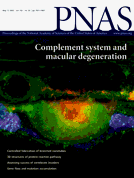Invasion success of vertebrates in Europe and North America
Jonathan M. Jeschke, David L. Strayer – 2005
Species become invasive if they (i) are introduced to a new range, (ii) establish themselves, and (iii) spread. To address the global problems caused by invasive species, several studies investigated steps ii and iii of this invasion process. However, only one previous study looked at step i and examined the proportion of species that have been introduced beyond their native range. We extend this research by investigating all three steps for all freshwater fish, mammals, and birds native to Europe or North America. A higher proportion of European species entered North America than vice versa. However, the introduction rate from Europe to North America peaked in the late 19th century, whereas it is still rising in the other direction. There is no clear difference in invasion success between the two directions, so neither the imperialism dogma (that Eurasian species are exceptionally successful invaders) is supported, nor is the contradictory hypothesis that North America offers more biotic resistance to invaders than Europe because of its less disturbed and richer biota. Our results do not support the tens rule either: that ≈10% of all introduced species establish themselves and that ≈10% of established species spread. We find a success of ≈50% at each step. In comparison, only ≈5% of native vertebrates were introduced in either direction. These figures show that, once a vertebrate is introduced, it has a high potential to become invasive. Thus, it is crucial to minimize the number of species introductions to effectively control invasive vertebrates.

